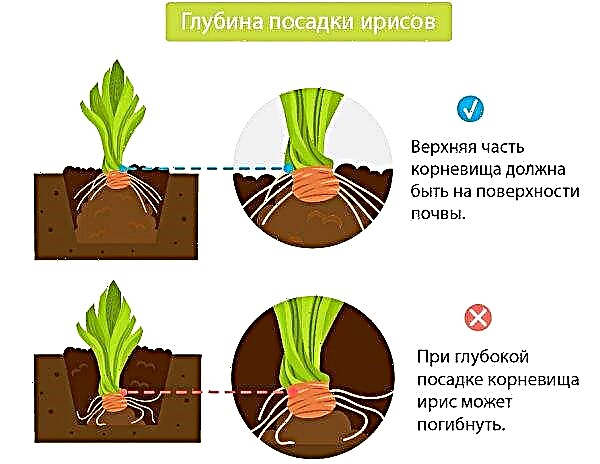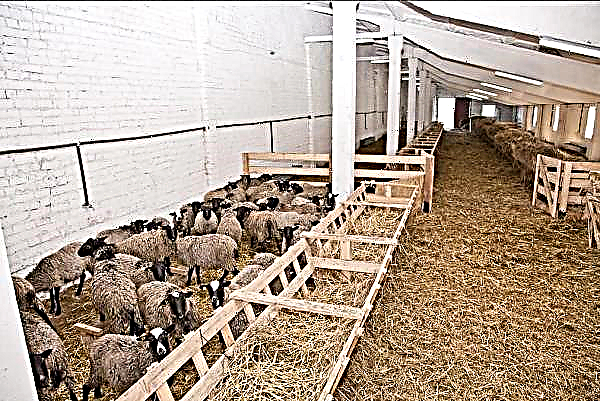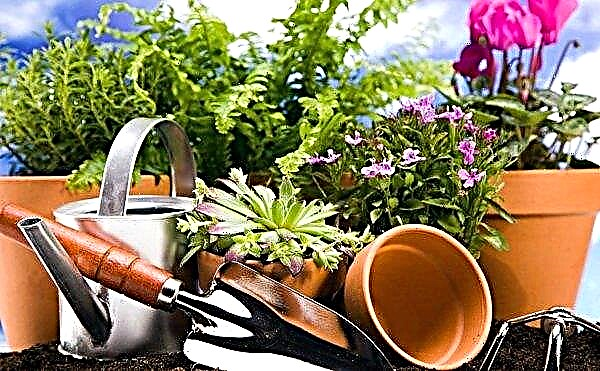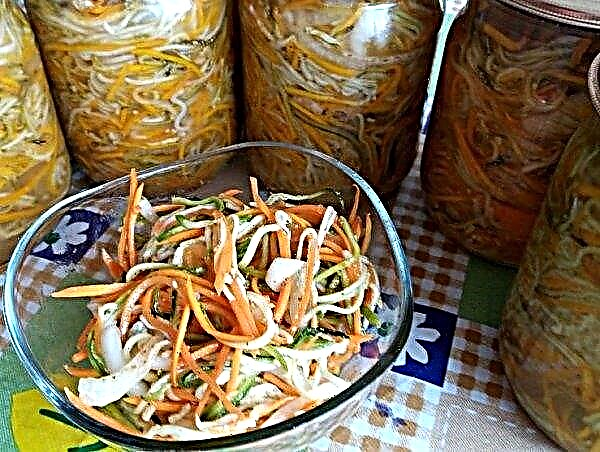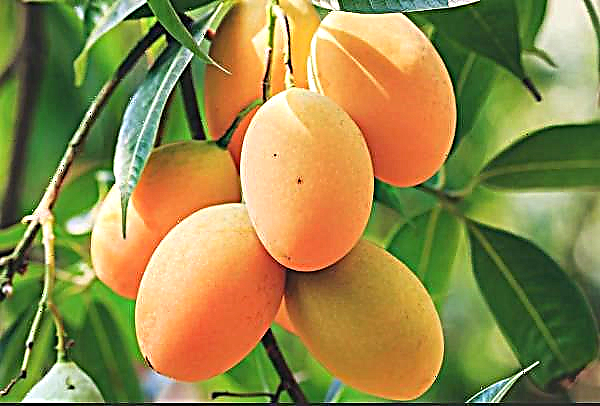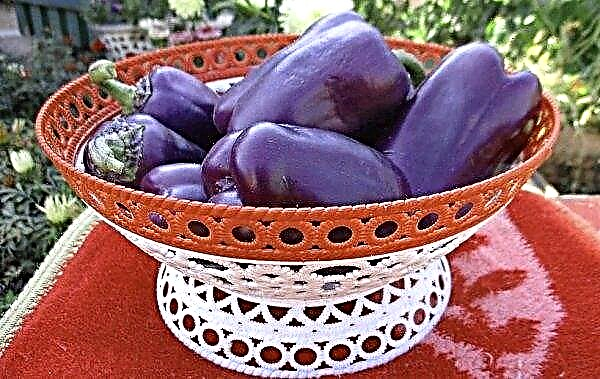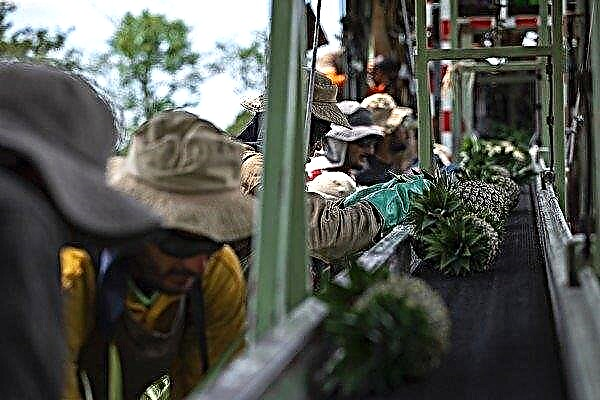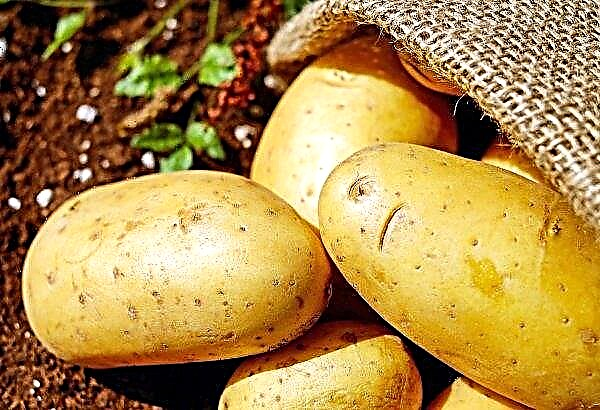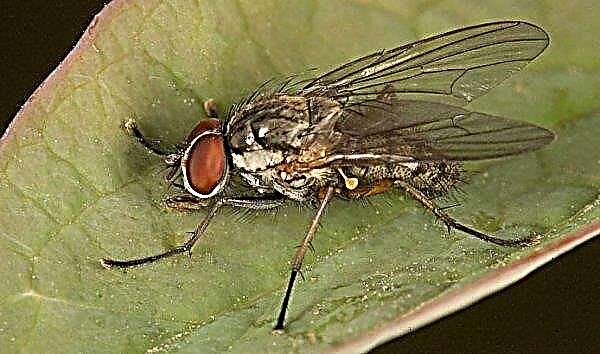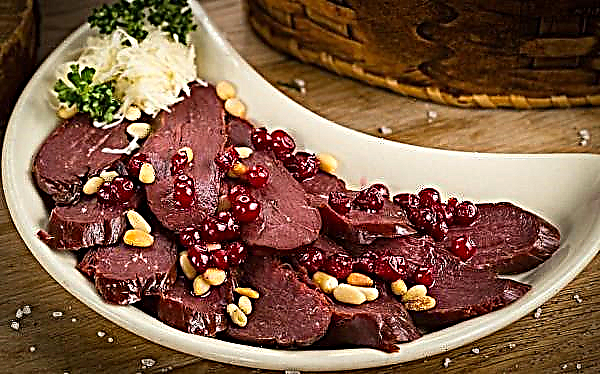Virginia Juniper is an evergreen shrub of the Cypress family. The Latin name is Juniperus virginiana, the habitat is the countries of North America. There are many varieties of this plant, one of which is Gray Owl.
Botanical Description
Juniper Virginia Gray Oul has an open crown shape. The branches of the shrub are directed upward, forming a relatively even shape. With age, the crown becomes two-tier. The color of the needles is green with a steel shade, the length of the needles is about 2 mm. Coniferous evergreen shrub, can reach a height of 3 m, the diameter of the crown - from 5 to 7 m. Annual growth is 10 cm in height and 15-30 cm in width of the crown. Small cones, about 6 mm in size, mature in the first year of life in October and do not fall for a long time.
Landing
Any soil is suitable for planting a variety of Gray Oul. This shrub is unpretentious, grows equally well in the sun and in the shade, tolerates any weather conditions. But nevertheless, it is worth observing some rules when planting it so that the plant unfolds in all its glory. The success of the event largely depends on the right choice of seedling.
Video: Juniper planting
Seedling selection and preparation
Young virgin juniper is better to get in the nursery.
Important! In order for the seedling to take root at 100%, its root system must be in the ground when buying.
When buying seedlings, the following rules should be followed:
- for better adaptation of the plant, get young animals;
- seedlings bought in containers are planted not only in spring and autumn, but also in summer.
- if the roots of the shrub are open, then it is better to plant in the early spring, immediately after the snow has melted. You can make a landing in May, but there is a danger of burning needles. Autumn planting is dangerous because the plant may not take root;
- select instances that do not have rotten and damaged processes on the root system;
- needles should be saturated in color, without rust spots indicating the presence of the disease.
Compliance with these rules will help to grow a healthy plant that will take root in your area for a long time.
Site preparation
Despite the fact that juniper grade Gray Oul is unpretentious, it is still worth paying special attention to the choice of place for its planting. A plant of this variety has a powerful root system, which grows rapidly, therefore, for its planting, you need to choose a spacious place. It is worth considering the fact that the juniper does not like it when it is often transplanted. Virginia Juniper prefers sandy loam and loamy soils, if the soil in the area is clay, then before planting seedlings, it must be “lightened” by adding sand or peat. The shrub tolerates drought well and does not like too wet areas. It should not be planted where there is a surface occurrence of groundwater, otherwise the roots will rot and the bush will die.
Virginia Juniper prefers sandy loam and loamy soils, if the soil in the area is clay, then before planting seedlings, it must be “lightened” by adding sand or peat. The shrub tolerates drought well and does not like too wet areas. It should not be planted where there is a surface occurrence of groundwater, otherwise the roots will rot and the bush will die.
A well-lit place with plenty of sunshine is best for planting seedlings. In the shade, the shrub can also grow, but at the same time lose its decorative effect. Another important condition for planting shrubs is soil drainage.
Landing process
The holes for planting seedlings make the width and depth two times larger than the size of the earth lump on the root of the plant. The bottom is covered with a 15 cm thick drainage layer, complex fertilizers are added (Fertis, Pokon, potassium humate). The plant in the hole is positioned so that the transition zone from the root to the stem is on the soil surface, gradually sprinkled with earth, carefully tamping each layer, preventing the formation of an air cushion. Then the top layer is compacted and watered abundantly. Many inexperienced gardeners make mistakes when planting: they remove from the roots the ground in which the seedling grew, dig a hole of an inappropriate size, and deepen the root neck. All this affects the survival rate, growth and development of the plant.
Then the top layer is compacted and watered abundantly. Many inexperienced gardeners make mistakes when planting: they remove from the roots the ground in which the seedling grew, dig a hole of an inappropriate size, and deepen the root neck. All this affects the survival rate, growth and development of the plant.
Did you know? Juniper exists on Earth for about 50 million years. In ancient Egypt, ancient Greece and Rome, it was first used as a medicinal plant.
Juniper Care
Like any other plant, juniper grown on a personal plot requires care. For the shrub to be beautiful and healthy, it must be properly watered, fed, trimmed off the crown, loosened and mulched.
Watering
This variety easily tolerates drought, so it is watered only in a very dry summer 1 time per month. About 2 buckets of water are poured under an adult bush. The daily evening spraying of the crown with water will not be superfluous.
Top dressing
In order for the plant to grow better, it is fed twice a season. In spring, in May, the bush is fertilized with nitroammophos (70 g per 1 sq. M.). In the fall, potash and phosphorus fertilizers are introduced: potassium nitrate, potassium sulfate (25–30 g per 1 sq. m.), superphosphate (50–60 g per 1 m 2). They are introduced, combined with watering, in order to avoid burning the root system.
Pruning
The plant is capable of forming a beautiful crown itself, but annual trimming is necessary to give a decorative look. The procedure should be approached responsibly, since this variety is characterized by slow growth, any mistake will lead to a long restoration of the bush. Trimming is enough to do once a year to remove dry and damaged branches.
Important! If you are an inexperienced gardener, then it is better to entrust a specialist to pruning Virginia juniper.
Loosening and mulching
After each watering and rain, the earth must be loosened. This is done so that a crust does not form on the surface of the soil, and oxygen enters the roots. After loosening, the soil must be mulched to preserve moisture, to prevent the appearance of weeds, as well as overheating and freezing of the soil. In addition, mulch is an additional top dressing; peat, sawdust or needles are used for it.
After loosening, the soil must be mulched to preserve moisture, to prevent the appearance of weeds, as well as overheating and freezing of the soil. In addition, mulch is an additional top dressing; peat, sawdust or needles are used for it.
Preparing for the winter
The variety under consideration is resistant to frost, so there is no need to shelter adult plants for the winter. Protection against frost is required only by young seedlings.
Therefore, they are prepared for winter as follows:
- young animals are watered and fed a month before severe frosts;
- the ground around the seedlings is covered with cut coniferous branches, and the crown is hidden under special material (craft paper, burlap, agrospan).
They insulate the plant by enveloping the covering material around it, hiding all the branches, and fix the stitches with a stapler. Or they make a frame, install it around the juniper, cover it with agrofibre and fix it with pegs.
Video: preparing juniper for winter
Possible diseases and pests
Juniper Virginia Gray Owl is resistant to infections, but if improperly maintained, it can become infected with one of the fungal diseases: alternariosis or necrosis. As a result of these diseases, a black coating appears on the needles, it falls off, and the shoots dry out. To avoid infection of the plant with diseases, if the soil is loosened in a timely manner, weeds growing nearby are removed, sanitary pruning is carried out, after which the branches need to be burned. You can cope with diseases with the help of the drug Fitosporin. They need to be treated when the first signs of the disease appear. If the preparation is in powder form, then 5 g is dissolved in a bucket of water. Paste preparation is prepared in a proportion of 3 tbsp. spoons on a bucket. In addition to diseases, pests can appear on the plant: juniper aphids, European juniper shields, juniper moths. To combat them, Confidor, Angio, Calypso preparations are used (1-2 ml of the drug per 5 liters of water).
You can cope with diseases with the help of the drug Fitosporin. They need to be treated when the first signs of the disease appear. If the preparation is in powder form, then 5 g is dissolved in a bucket of water. Paste preparation is prepared in a proportion of 3 tbsp. spoons on a bucket. In addition to diseases, pests can appear on the plant: juniper aphids, European juniper shields, juniper moths. To combat them, Confidor, Angio, Calypso preparations are used (1-2 ml of the drug per 5 liters of water).
Breeding methods
Propagate the plant in three ways: cuttings, seeds, branches. The most difficult of these is growing from seeds. An easier and more productive method is the cuttings. Procurement of the necessary material is done in August, best in wet weather. Cut the cuttings are treated with “Kornevin” or “Epin”, placed in prepared soil, watered and put in a warm place. In order for the roots on the cuttings to appear faster, the temperature should be from +16 to + 20 ° C.
Did you know? In ancient Russia, juniper bark was used for making dishes. In it, even on a hot day, milk did not sour.
When a new needles appears, the temperature is increased to + 26 ° C. At the time of rooting of the cuttings, they are sprayed at least once a week. After the roots appear on the cuttings, they wait another year, and then young plants are planted in the ground. The easiest way that does not require unnecessary physical costs is reproduction by tap. In order to grow a seedling in this way, it is necessary to loosen the soil around the shrub, lay the lower shoot in it, having previously cleared the needles, and fix it with metal staples. After that, it is necessary to sprinkle it with earth, water it, and then cover it with mulch. In the spring, when the branch takes root, separate it from the main bush and transplant it to a previously prepared place.
In order to grow a seedling in this way, it is necessary to loosen the soil around the shrub, lay the lower shoot in it, having previously cleared the needles, and fix it with metal staples. After that, it is necessary to sprinkle it with earth, water it, and then cover it with mulch. In the spring, when the branch takes root, separate it from the main bush and transplant it to a previously prepared place.
Video: super juniper propagation method
Use in landscape design
When creating the landscape design of the site, they often use the Gray Oul variety. The attention of designers is attracted by the color of needles blue with a green-gray tint, as well as branches hanging down on the edges and strewn with small cones. In addition, the plant has several other advantages. Juniper Virginia Gray Oul survives well, has high vitality, does not require special care and annual crown formation, goes well with other evergreen and deciduous plants.
Looks advantageous in the neighborhood of heather, barberry, roses, thuja. An unpretentious, evergreen plant will decorate any landscape. Variety Gray Owl can often be seen not only in gardens, it is used as a hedge and for landscaping parks. The plant looks equally beautiful both in a group and in a single planting.

